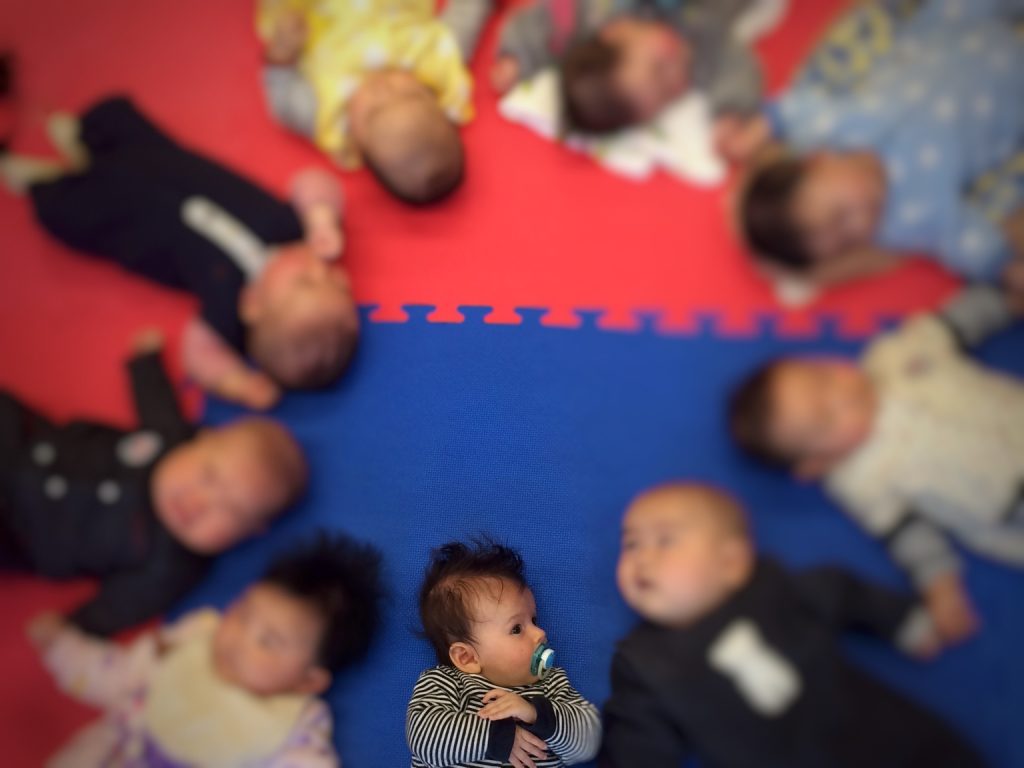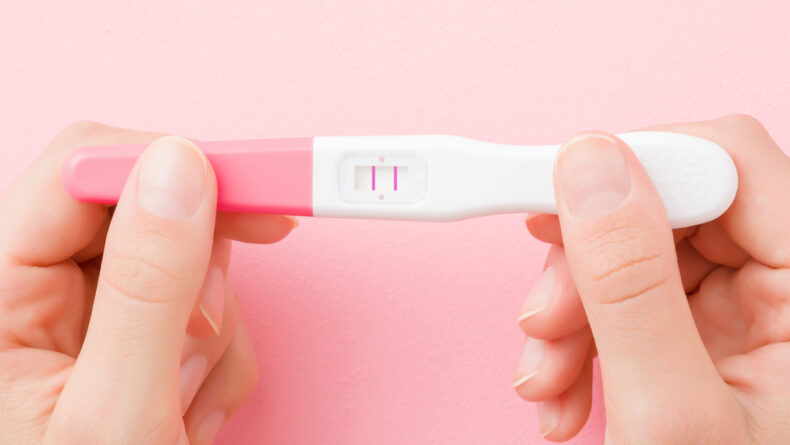Prenatal Classes in Japan
Hee, Hee, Whoo
Attending a prenatal class is a valuable experience. Want to join one but don’t know what to expect from a class in Japan? Here is one Mama’s experience.
Hee, Hee, Whoo. Hee, Hee, Whoo. The women with swollen bellies rest between the straddled legs of their partners and self-consciously concentrate on breathing. Breathing. Breathing. The straddle-legged partners sit awkwardly, sheepishly avoiding eye contact with each other while trying to coach their significant others. The sprightly yet softly-spoken woman eagerly walks the aisles encouraging the women to breathe. Breathe. Breathe. Hee, Hee, Whoo. The rhythmic sounds of determined breathing echo around the walls of the stuffy, dated and overly-furnished room.
That was my (admittedly Hollywood-influenced) image of what prenatal classes would entail. It loomed before me as a horrendously awkward rite of passage that I thought any pregnant couple should traverse.
Perhaps due to busy schedules, a preference for drug-assisted birth or planned caesarean sections, a reliance on Dr. Google or a number of other possible reasons, attendance at prenatal classes seems to have decreased in many Western countries as of late.
However, participation in prenatal classes has a myriad of well-documented benefits and can serve as an important step in preparing for childbirth and parenthood.
Attending a class can boost your confidence by taking some of the unknown out of the daunting process of childbirth (particularly helpful in a foreign country), equip you with techniques for coping with pain during labor, provide you with a community of parents-to-be and prepare your partner to be an involved and supportive player during the big event. As Gail Herrine, an ob-gyn, aptly put it in an article regarding childbirth classes on parenting.com, “labor is not a great time to start learning the ropes and making major decisions.”
Prenatal classes in Japan
So, you decide you best be diligent and start learning about this birthing business. Where to begin? Your local city health center will likely provide classes for prospective parents free of charge. You should be able to find information regarding this in the pregnancy packet you received when registering your pregnancy. Your hospital will also likely offer classes. Most classes are offered in Japanese only, although I am of the opinion that joining a local class is beneficial if you have even a basic grasp of the language. There are also some great English options available (see resource list below). Classes may be targeted at both mother and father (両親学級 ryooya gakkyū) or focused solely on the mother (母親学級 hahaoya gakkyū).
I participated in the hahaoya gakkyū offered by my local hospital. The class cost roughly ¥5,000 and consisted of five, two-hour sessions spread over several months.
While the class was primarily focused towards mothers, fathers (we were told) were also welcome to attend. Armed with this and not much other knowledge about what was to come, we tentatively strode into the first class, hand-in-hand.
Inside the small conference room we found a group of quietly-seated, pregnant Japanese women smiling at us politely. Not a single nervous-looking man in sight.
We took our seats and hoped that there was no detailed talk of breastfeeding or tearing, erm, “down there” that day. We needn’t have to be worried! The day’s activities consisted of jikoshokai (self-introductions), a “guess my due date” game to break the ice, and a lecture from a junior doctor warning us of all things that could go wrong during our pregnancies, risk signs to look for, and a severe warning to be careful not to gain too much weight.
The following three classes took us on a windy route through lifestyle and nutrition during pregnancy (no bike-riding or chocolate-eating allowed!), a session on pregnancy-safe exercises, a review of the baby supplies we should prepare, lessons in the development of the fetus during pregnancy, videos and instruction in breastfeeding and baby-holding practice.
The final class was held on a Saturday so that the fathers could attend. During this class we discussed the stages of labor and delivery, were taken on a tour of the hospital, watched a 20-minute (very non-intimidating) birth video and went through the list of things to bring with us to the hospital as well as the procedure for calling, arriving and checking-in. The best part was when the fathers were encouraged to try on an unattractive pregnancy suit and attempt to reach things on the floor in the hopes that they would develop empathy for the physical state of us mothers. The men’s embarrassed looks, complemented by the smug grins and snapping of cameras on the part of the mothers were classic.
I was surprised to find that there was no session on breathing exercises, birthing positions or pain management techniques.
While I was only able to grasp the main points of the material presented due to my limited Japanese abilities, I enjoyed the light and friendly atmosphere of the classes. It served as a great place to meet other mommies-to-be in my neighborhood and I can tell you that nothing beats the feeling of solidarity that comes from being part of a group of women approaching the great unknown of childbirth for the first time! For this reason alone, I would recommend joining a locally-held class (particularly if you are a little short in the pregnant friends department). Even if you don’t speak Japanese well, there should be at least one English speaker in the class with whom you can relate, although you might need to be prepared to take the first step in striking up a conversation. I was deeply grateful to the kind midwife who facilitated the course. She made sure to speak slowly to me, and took time after each class to check if I wanted clarification about anything. We also received a coursebook outlining most of what was covered, so I was able to decipher missed information later on when necessary.
The reunion
Six months after the final class the hospital organized a reunion of the mothers from our group. We all attended with our approximately 3-month-old babies in tow. It was a great time of sharing birth stories, admiring our cute babies, raising concerns, asking questions and offering advice to each other. One of the hospital’s nutritionists also popped by to give us advice about introducing solids.
Overall, the experience and friends I made with whom I still have occasional contact, were definitely a welcome addition to my pregnancy and birth journey.
Resources: Prenatal classes in English
If you are looking for classes in English in Japan, check out the following:
Childbirth Education Center offers a number of classes and birth-related services and information.
Birth Education Services in Tokyo offers pregnancy and birth classes at the Tokyo American Club.
Tokyo Pregnancy Group holds gatherings for pregnant women in Tokyo at which experts in various pregnancy-related fields are often invited to speak.
Tokyo Mothers Group holds events and gatherings and has an active Facebook Page via which you can glean much practical information from women who have previously given birth in Japan.
Shibuya Public Health Center offers prenatal classes with English translation several times per year.
















